
Bridging the Gap Peer Kit: For Agencies Employing Young Adults in Peer Roles
Provides resources, processes, and practices to support young people in peer roles working in community mental health settings.
The following resources on child trauma were developed by the NCTSN. To find a specific topic or resource, enter keywords in the search box, or filter by resource type, trauma type, language, or audience.

Provides resources, processes, and practices to support young people in peer roles working in community mental health settings.

Provides information on how to talk to children about mass shootings. This tip sheet describes ways to talk to children about mass violence events that involve a shooting. Translated 2022.
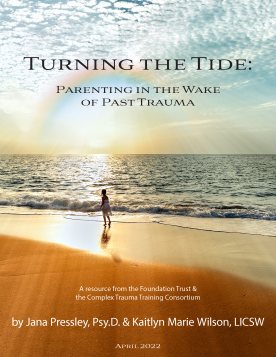
Gives voice to the struggles of parents and caregivers who experienced trauma growing up in their own families. For adults who are living with the painful effects of their own childhood environment, becoming a parent may introduce a variety of new emotional and functional challenges.
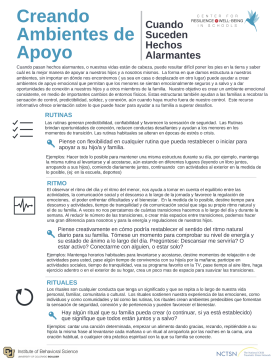
Cómo crear ambientes de apoyo cuando ocurren hechos atemorizantes: ofrece orientación para crear ambientes de apoyo para los jóvenes cuando ocurren hechos atemorizantes. Esta hoja informativa incluye información sobre rutinas, ritmos y rituales.

Cómo hablar con los adolescentes cuando ocurren hechos atemorizantes: ofrece orientación para hablar con adolescentes cuando ocurren hechos violentos.

Cómo hablar con los niños cuando ocurren hechos atemorizantes: ofrece orientación para hablar con niños y jóvenes cuando ocurren hechos atemorizantes.
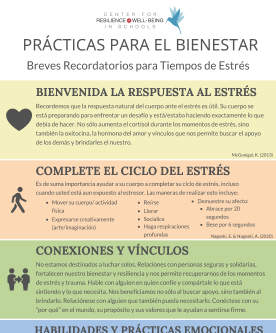
Amables recordatorios para tiempos de estrés: ofrece amables recordatorios de prácticas de bienestar en tiempos de estrés.
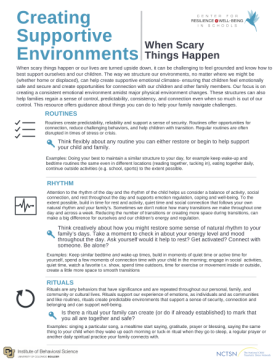
Offers guidance on creating supportive environments for youth when scary things happen. This fact sheet includes information on routines, rhythm, and rituals.
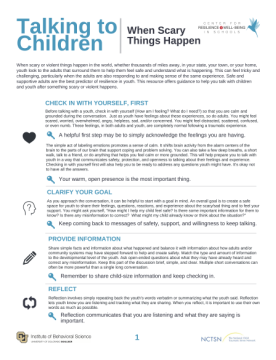
Offers guidance on talking with children and youth when scary things happen.

Offers guidance on talking with teens when violence happens. This fact sheet includes information on checking in with yourself, clarifying your goal, providing information and options, reflection, asking helpful questions, going slow, labeling emotions, validating, and monitoring media and social media exposure.
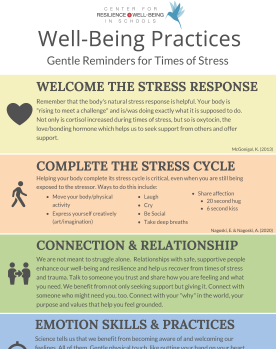
Offers gentle reminders for well-being practices in times of stress. This fact sheet includes information on welcoming the body's stress response, completing the stress cycle, connection & relationship, emotion skills & practices, and mindfulness & attention.
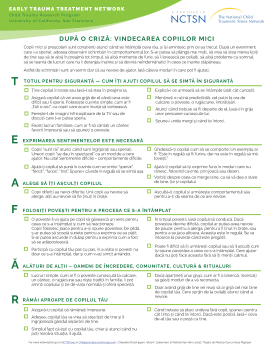
Offers tips to parents on how to help young children, toddlers, and preschoolers heal after a traumatic event. Translated 2022.